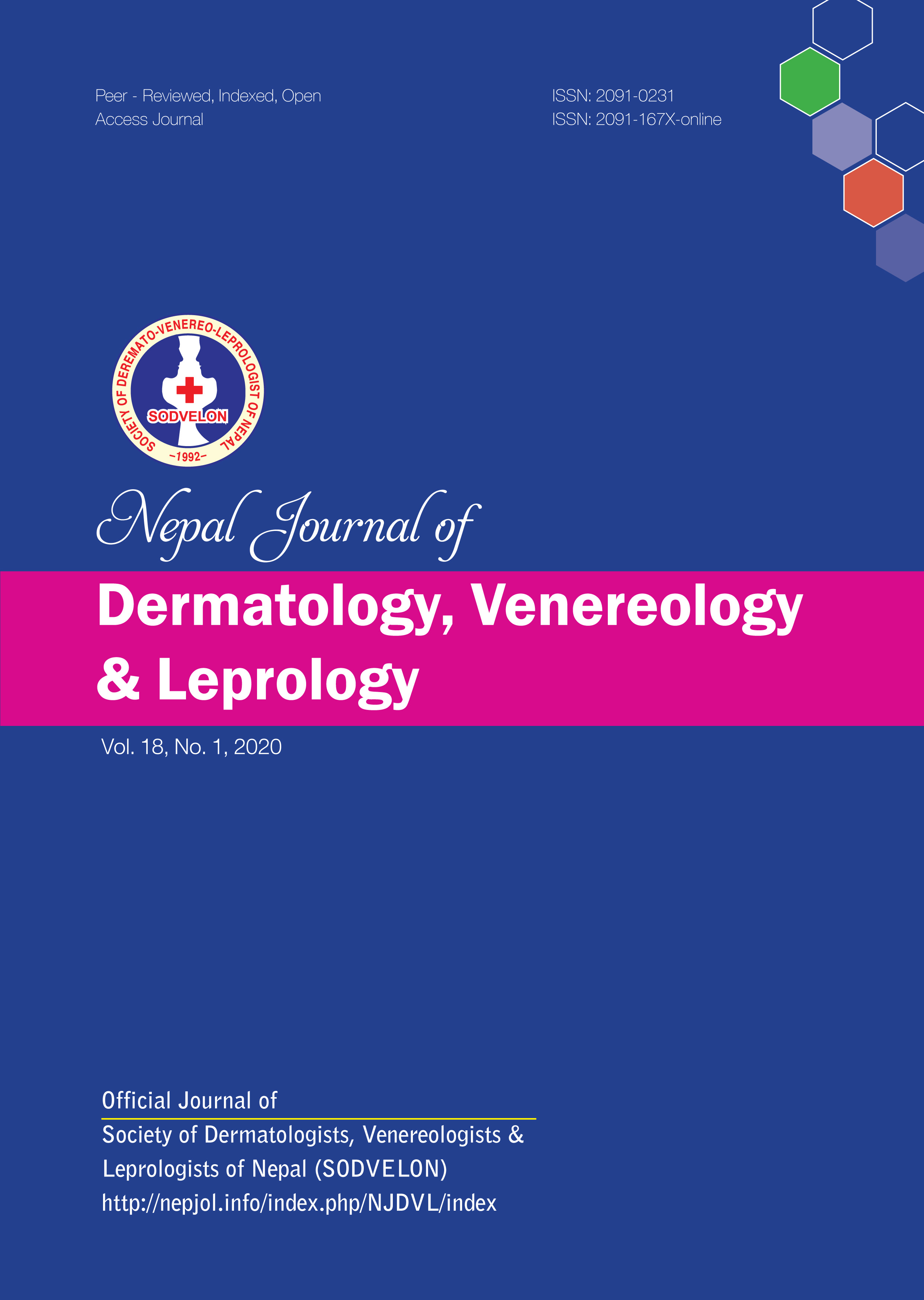Study of Cutaneous Manifestations in End Stage Kidney Disease Undergoing Hemodialysis
DOI:
https://doi.org/10.3126/njdvl.v18i1.29568Keywords:
Diabetic Nephropathies, Kidney Failure, Chronic, Pruritus, Renal DialysisAbstract
Introduction: The prevalence of cutaneous manifestations in hemodialysis patients is increasing.
Objectives: The aim of this study was to determine the prevalence and pattern of various cutaneous manifestations in patients undergoing maintenance hemodialysis.
Material and Methods: A hospital based cross sectional study was conducted in patient undergoing maintenance hemodialysis at least for three months in dialysis unit of Manipal Teaching Hospital Pokhara, Nepal during the period from August 2018 to January 2019. A demographic questionnaire and a checklist about cutaneous disorders were used for data collection. Patients with cholestatic liver disease or acute hepatitis, active infection, active malignancy, patient with acute kidney injury, patient undergoing peritoneal dialysis and renal transplant recipient were excluded from study.
Results: Total 80 patients undergoing maintenance hemodialysis were included. Among them, 52 (65%) patients were male. The mean age of study population was 51.95±14.96 years. The mean duration of dialysis was 40.28±11.09 months. The most common cause of end stage kidney disease was diabetic nephropathy. The most common cutaneous manifestations were pigmentation (82.5%), nail changes (75%), xerosis (70%) and pruritis (50%).
Conclusions: The results of this study revealed that patients on hemodialysis were associated with multiple cutaneous symptoms, the most prevalent of which were pigmentation and nail disorders. Therefore, early diagnosis of these problems is a major step in improving the quality of life in these patients.
Downloads
Downloads
Published
How to Cite
Issue
Section
License
Copyright on any research article is transferred in full to Nepal Journal of Dermatology, Venereology & Leprology upon publication. The copyright transfer includes the right to reproduce and distribute the article in any form of reproduction (printing, electronic media or any other form).




